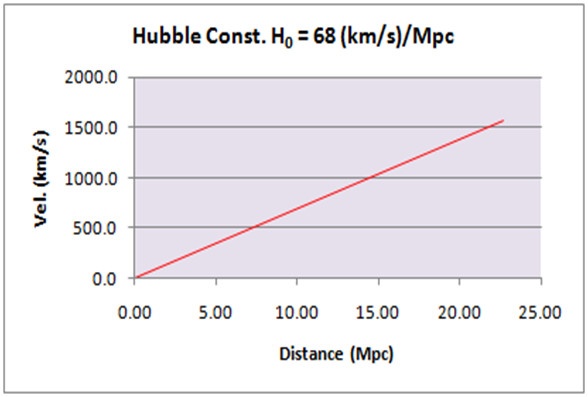Distant Nature: Astronomy Exercises
Objectives
After Edwin Hubble’s work using Cepheid variable stars to measure distance to the “Spiral
Nebulae”, he embarked on a quest to understand the velocity, if any, that theses
galaxies were moving with respect to ourselves. In this experiment, we will
trace through the steps similar to Hubble’s work. These steps
eventually led Hubble to the observation that the farther away a galaxy was,
the greater was its recessional velocity. His insights led him to the constant
H0, called the Hubble constant, which directly relates to the
expansion rate of the universe.
Equipment/Materials Needed
Stellarium, Calculator, Graph Paper.
Subject Introduction
Hubble examined the spectra of many galaxies, looking for the red or
blue shifts in the spectra which would indicate relative motion. To his
surprise, not only did all of the galaxies appear to be moving, but all were
moving away from us, no matter the direction of the galaxy. He measured the
spectral shifts for many galaxies and found them to all exhibit a redshift. He
used Equation 1 to quantify the redshift (z) values for each galaxy. Figure 1,
represents Hubble’s original findings, of H0 =68 (km/s)/Mpc.
Where: z = the redshift, lobs =
the observed wavelength, l0 = the un-shifted wavelength.

Figure 1.